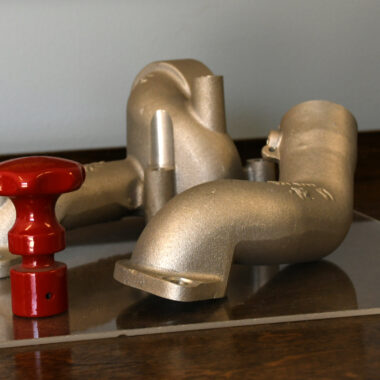Unraveling About Aluminum Casting: From Fundamentals to Know-how
Unraveling About Aluminum Casting: From Fundamentals to Know-how
Blog Article
Crafting Perfection: Exactly How to Achieve High-Quality Aluminum Castings Every Time
In the realm of aluminum spreading, the quest of perfection is a continuous trip that calls for a thorough technique and a keen understanding of the details included. Attaining constant high-grade light weight aluminum spreadings demands a comprehensive understanding of the procedures, from choosing the appropriate alloy to implementing exact mold and mildew layouts and thoroughly controlling spreading parameters. The real proficiency exists in the capacity to carry out these elements flawlessly to create perfect castings every time. As we discover the intricacies of crafting excellence in light weight aluminum castings, revealing the essential approaches and techniques that cause flawless results becomes vital for those pursuing excellence in this customized field.
Recognizing Aluminum Casting Procedures
Aluminum casting procedures, vital in the production sector, entail the complex makeover of liquified light weight aluminum right into solid kinds via a series of meticulously controlled steps. Comprehending these processes is vital to accomplishing high-grade aluminum spreadings continually - about aluminum casting. The key approaches utilized in aluminum casting are die spreading, sand spreading, and financial investment spreading

Each of these procedures has its benefits and is selected based on aspects like intricacy, quantity, and wanted coating of the light weight aluminum spreading. about aluminum casting. Understanding the complexities of these techniques is vital for suppliers intending to generate high-quality aluminum spreadings continually
Picking the Right Light Weight Aluminum Alloy
Choosing the ideal aluminum alloy is a crucial decision in the production of high-quality light weight aluminum spreadings. When choosing an aluminum alloy for spreading, it is essential to take into consideration the specific needs of the application to guarantee optimum performance.
One of the most generally made use of light weight aluminum alloys for spreading is A356 - about aluminum casting. For applications requiring high strength, 7075 aluminum alloy is a prominent option due to its outstanding strength-to-weight proportion.
In enhancement to mechanical homes, considerations such as expense, accessibility, and post-casting processes must additionally affect the option of the ideal aluminum alloy. By meticulously evaluating these factors, manufacturers can ensure the manufacturing of high-quality aluminum castings that fulfill the wanted requirements.
Implementing Proper Mold Style
Developing a reliable mold layout is critical for making certain the effective production of high-grade light weight aluminum castings. Proper mold and mildew style plays a substantial duty in accomplishing the desired features of the end product. To carry out a successful mold design, elements such as product flow, cooling down prices, and part geometry must be carefully taken into consideration.
One key facet of mold and mildew style is ensuring appropriate filling and solidification of the light weight aluminum top article within the mold tooth cavity. This entails making runner and gating systems that promote smooth steel circulation and avoid issues such as air entrapment or incomplete dental filling. Furthermore, incorporating air conditioning channels right into the mold and mildew style helps regulate solidification rates and minimize the threat of porosity or shrinkage problems.

Controlling Spreading Parameters

Making Certain Post-Casting Quality Checks
To preserve the high quality of light weight aluminum spreadings, extensive post-casting quality checks are vital. After the spreading process is completed, it is important to make certain that the final items fulfill the wanted specifications and standards.
Dimensional accuracy is an additional essential aspect that must be confirmed throughout post-casting high quality checks. Dimensions of vital measurements and tolerances ought to be taken to verify that the castings comply with the needed requirements. Additionally, mechanical residential properties such as solidity, tensile stamina, and effect resistance may require to be evaluated with product screening to ensure that the castings possess the necessary strength and longevity for their intended application.
Conclusion
To conclude, achieving high-quality light weight aluminum castings calls for a comprehensive understanding of the casting procedures, picking the ideal alloy, designing mold and mildews successfully, managing casting criteria thoroughly, and conducting post-casting high quality checks diligently. By following these actions, manufacturers can consistently generate aluminum spreadings that meet the highest criteria of high quality and performance.
Attaining constant top notch aluminum spreadings requires a comprehensive understanding of the procedures, from picking the ideal alloy to carrying out accurate mold and mildew layouts and thoroughly controlling spreading parameters. The key methods used in light weight aluminum casting are pass away casting, sand spreading, and financial investment spreading.
Investment spreading, also understood as accuracy why not check here casting, entails producing wax patterns that are covered in ceramic to form mold and mildews.Choosing the appropriate aluminum alloy is an essential choice in the production of high-grade aluminum castings.Making certain accurate control over spreading specifications is essential for preserving uniformity and quality in light weight aluminum casting manufacturing.
Report this page